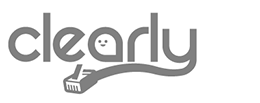Introduction to Unified Communication
In today’s rapidly evolving healthcare landscape, communication and collaboration have become increasingly critical for healthcare establishments to provide efficient and high-quality patient care. This is where unified communication (UC) comes into play, offering a comprehensive solution to streamline communication and enhance productivity within healthcare organizations.
Unified communication is a convergence of various communication technologies, including voice, video, messaging, and collaboration tools, into a single, integrated platform. By unifying these disparate communication channels, healthcare organizations can leverage the power of seamless information sharing, real-time interaction, and improved decision-making, ultimately leading to enhanced efficiency and better patient outcomes.
The Importance of Unified Communication in Healthcare
Healthcare establishments, such as hospitals, clinics, and medical practices, face unique communication challenges that can significantly impact their operational efficiency and patient care. Effective communication is essential in healthcare, as it enables healthcare professionals to coordinate care, share critical information, and respond to emergencies in a timely manner.
Unified communication addresses these challenges by providing a centralized platform that integrates various communication modalities, including:
- Voice communication: Enables seamless voice calls, conferencing, and voicemail management across multiple devices and locations.
- Video conferencing: Facilitates remote consultations, team meetings, and collaboration, improving access to specialist care and reducing travel time.
- Instant messaging and presence: Allows for real-time collaboration and sharing of critical information among healthcare teams.
- Mobility and remote access: Enables healthcare professionals to stay connected and access communication tools from anywhere, using their preferred devices.
- Integrations with healthcare systems: Seamless integration with electronic medical records (EMRs), patient portals, and other healthcare-specific applications, ensuring a streamlined workflow.
By implementing a unified communication solution, healthcare establishments can experience numerous benefits that enhance their overall efficiency and patient care.
Benefits of Unified Communication in Healthcare
- Improved Collaboration and Information Sharing: Unified communication facilitates seamless collaboration among healthcare professionals, enabling them to share information, coordinate care, and make more informed decisions. This leads to better patient outcomes and reduced medical errors.
- Enhanced Accessibility and Responsiveness: With unified communication, healthcare professionals can be reached quickly and easily, regardless of their location or device. This improves their ability to respond to urgent situations, provide timely care, and maintain continuous patient engagement.
- Increased Productivity and Efficiency: Streamlining communication through a unified platform eliminates the need to toggle between multiple applications, reducing administrative tasks and allowing healthcare providers to focus more on patient care.
- Reduced Communication Delays and Errors: Unified communication minimizes miscommunications and delays that can occur when using disparate communication channels, leading to faster decision-making and improved patient safety.
- Cost Savings: By consolidating various communication technologies into a single platform, healthcare organizations can reduce overall operational costs, maintenance expenses, and the need for specialized IT support.
- Compliance and Security: Unified communication solutions often incorporate robust security features and comply with healthcare-specific regulations, such as HIPAA, ensuring the protection of sensitive patient data.
- Scalability and Flexibility: Unified communication platforms are designed to scale with the growing needs of healthcare organizations, allowing them to adapt to changes in patient volume, facility expansions, and evolving communication requirements.
Implementing Unified Communication in Healthcare with ClearlyIP
To implement a unified communication (UC) solution effectively in a healthcare setting, establishments need to undertake a strategic and systematic approach. ClearlyIP, recognized for its innovative telecommunications solutions, provides a structured methodology for deploying UC systems within healthcare environments, ensuring they address specific needs while adhering to industry standards and regulations.
- Needs Assessment and Customization: Initially, ClearlyIP conducts a comprehensive assessment of the healthcare organization’s communication needs, identifying any existing pain points and evaluating the current infrastructure. This assessment is crucial to tailor the ClearlyIP’s Clearly Cloud UC solution, ensuring it aligns perfectly with the unique requirements of the establishment.
- Integration with Healthcare Systems: A pivotal aspect of the UC implementation is the seamless integration of Clearly Cloud with the organization’s electronic medical records (EMRs), patient portals, and other healthcare-specific applications. This integration facilitates streamlined workflows, enhances data sharing, and ensures that communication enhancements complement existing protocols and systems.
- Security and Compliance Assurance: ClearlyIP prioritizes the deployment of a UC solution that rigorously adheres to security and compliance standards, including HIPAA. The Clearly Cloud platform is fortified with advanced security features, ensuring the protection of patient data and compliance with healthcare regulations such as Kari’s Law and Ray Baum’s Act, which mandate direct 911 dialing and accurate dispatchable location sharing.
- Training and Change Management: To maximize the benefits of the new UC system, ClearlyIP provides comprehensive training and change management support. This ensures that healthcare professionals are well-versed in utilizing the new communication tools, facilitating smooth adoption and minimizing disruptions to existing processes.
- Ongoing Support and System Optimization: Recognizing the dynamic nature of healthcare environments, ClearlyIP establishes a robust support and maintenance framework. This ongoing support ensures that any technical issues are swiftly addressed, user assistance is readily available, and the UC solution is continually optimized to align with the evolving needs of the healthcare establishment.
- Enhanced Communication Capabilities: Clearly Cloud empowers healthcare professionals with a unified platform that integrates voice, video, messaging, and collaboration tools, accessible from any location and on any device. This mobility and flexibility are vital for maintaining continuous patient engagement and effective care coordination.
- Scalability and Future-Proofing: As healthcare organizations grow and their communication needs evolve, Clearly Cloud’s scalable and flexible architecture enables them to adapt efficiently. This includes accommodating changes in patient volume, facility expansions, or advancements in healthcare communication technologies.
- Complementary Solutions: Alongside Clearly Cloud, ClearlyIP offers additional solutions like the VoIP Failover Gateway for uninterrupted communication during network outages and the CodeX emergency notification system for rapid response in critical situations, further enhancing the resilience and responsiveness of healthcare communications.
By carefully considering these factors and partnering with a reliable unified communication provider, healthcare establishments can successfully implement a UC solution that enhances communication, improves workflow efficiency, and ultimately leads to better patient outcomes.
Regulatory Considerations: Kari’s Law and Ray Baum’s Act
When implementing a unified communication system in a healthcare setting, it is crucial to ensure compliance with key regulatory requirements, such as Kari’s Law and Ray Baum’s Act.
Kari’s Law
Kari’s Law is a federal law in the United States that requires multi-line telephone systems (MLTS), such as those used in healthcare facilities, to enable users to directly dial 911 without the need for an additional prefix (e.g., dialing “9” to reach an outside line). This law also mandates that the MLTS must provide notification to a central location, such as a security office or front desk, when a 911 call is made.
By complying with Kari’s Law, healthcare establishments can ensure that their staff and patients can quickly and easily access emergency services in critical situations, potentially saving lives.
Ray Baum’s Act
Ray Baum’s Act is a federal law that complements Kari’s Law by requiring the MLTS to provide a “dispatchable location” to the 911 call center. This location information should include the street address, floor, room number, or other relevant details that can assist emergency responders in quickly locating the caller.
Compliance with Ray Baum’s Act is particularly important in healthcare settings, where patients may be located in different areas of a facility, and providing accurate location information is crucial for a timely emergency response.
Unified communication solutions that are designed to meet the requirements of Kari’s Law and Ray Baum’s Act can help healthcare establishments fulfill their legal obligations and ensure the safety and well-being of their staff and patients.
ClearlyIP: Unified Communication Solutions for Healthcare
ClearlyIP, a leading provider of innovative telecommunications solutions, offers a comprehensive suite of unified communication products and services tailored to the specific needs of healthcare establishments.
ClearlyIP’s Clearly Cloud is a feature-rich UCaaS (Unified Communications as a Service) platform that seamlessly integrates voice, video, messaging, and collaboration tools into a single, cloud-based solution. Designed with healthcare in mind, Clearly Cloud offers:
- Compliance with Kari’s Law and Ray Baum’s Act: Clearly Cloud ensures that healthcare organizations can meet the regulatory requirements for direct 911 dialing and provision of dispatchable location information.
- Secure and HIPAA-Compliant Communication: The platform incorporates robust security measures and complies with HIPAA regulations, safeguarding the privacy and confidentiality of patient data.
- Seamless Integration with Healthcare Systems: Clearly Cloud integrates with electronic medical records (EMRs), patient portals, and other healthcare-specific applications, enabling a streamlined workflow and improved information sharing.
- Mobility and Remote Access: Healthcare professionals can access the Clearly Cloud platform from anywhere, using their preferred devices, ensuring continuous patient engagement and care coordination.
- Scalability and Flexibility: The Clearly Cloud platform is designed to scale with the growing needs of healthcare organizations, allowing them to adapt to changes in patient volume, facility expansions, and evolving communication requirements.
In addition to Clearly Cloud, ClearlyIP offers a range of complementary solutions, including the ClearlyIP VoIP Failover Gateway, which ensures reliable communication during internet or power disruptions, and the CodeX emergency notification system, which enables rapid and targeted communication during critical situations.
By partnering with ClearlyIP, healthcare establishments can leverage a suite of innovative unified communication solutions that enhance efficiency, improve patient care, and ensure regulatory compliance, ultimately contributing to better healthcare outcomes.
In the dynamic healthcare landscape, unified communication has become a crucial enabler of efficient and effective patient care. By integrating various communication modalities into a single, seamless platform, healthcare establishments can significantly improve collaboration, responsiveness, and overall operational efficiency.
ClearlyIP’s comprehensive suite of unified communication solutions, designed specifically for the healthcare industry, empowers healthcare organizations to enhance communication, streamline workflows, and comply with critical regulatory requirements.
By implementing a robust unified communication system, healthcare establishments can unlock new levels of efficiency, improve patient outcomes, and stay ahead in the rapidly evolving healthcare ecosystem.

